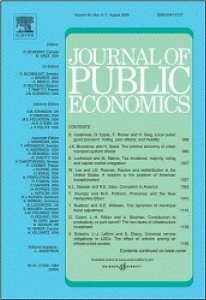
Brandts, J. and Schram, A. (2001). Cooperation and Noise in Public Goods Experiments: Applying the Contribution Function Approach Journal of Public Economics, 79(2):399--427.
-
Affiliated author
-
Publication year2001
-
JournalJournal of Public Economics
We introduce a new design for experiments with the voluntary contributions mechanism for public goods. Subjects report a complete con-tri-bution function in each period, i.e., a contribution level for various marginal rates of transformation between a public and a private good. The results show that subjects' behavior cannot be explained exclusively as the result of errors. Indivi-duals exhibit essentially one of two types of behavior. One group of subjects behaves in a way, consistent with some kind of other-regarding motivation. Some features of the data indicate that these subjects' behavior is interdependent. Another group of subjects behaves in accordance with a utility function that depends only on their own earnings. The interaction between these two groups may be important when explaining behavior over time.